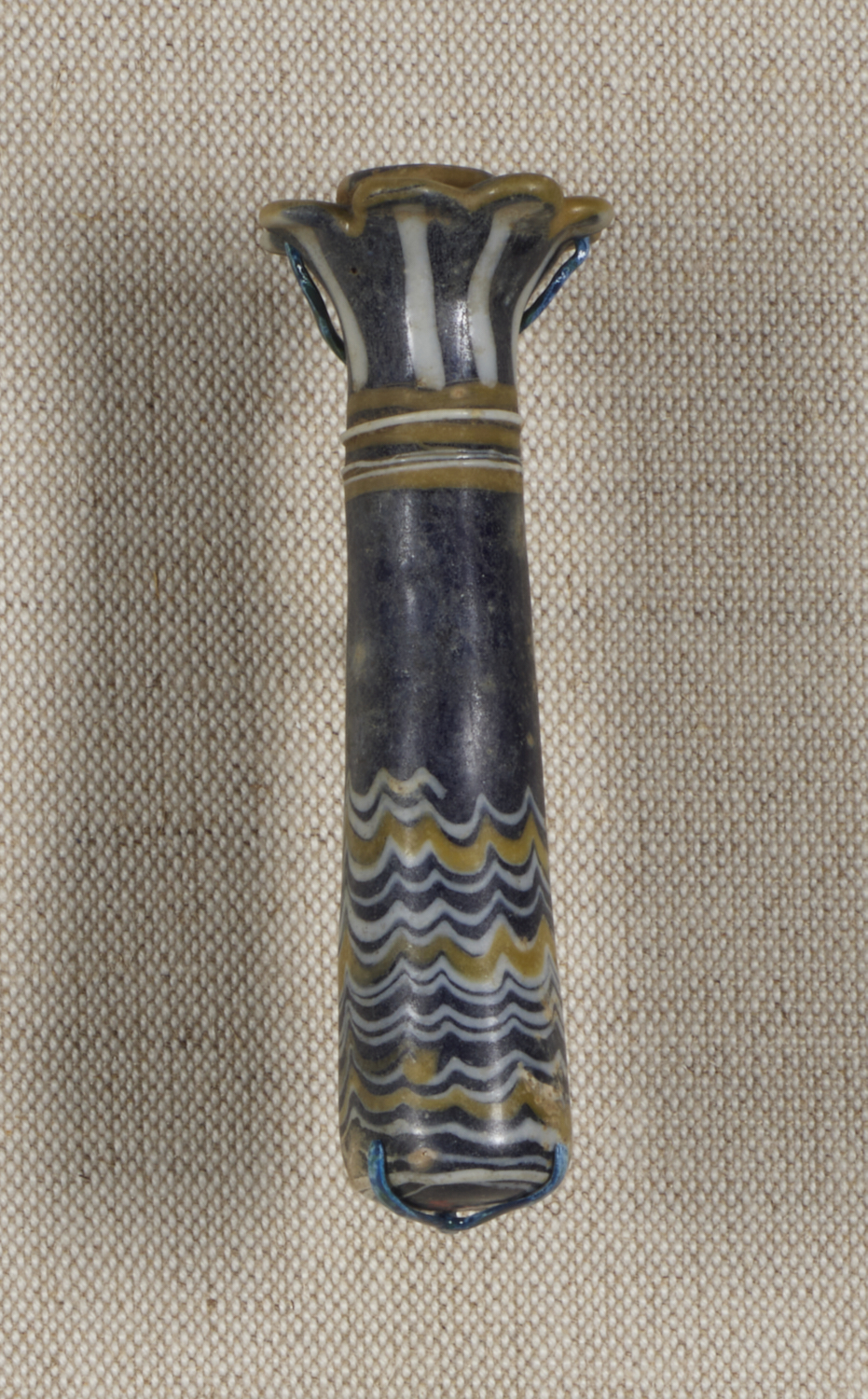Palm Column Kohl Tube
The Egyptian learned from their Near Eastern neighbors how to make glass. At first they imported the raw material and processed it in Egypt, but soon they learned how to produce it by themselves.
This core-formed glass kohl tube, is datable to the 18th Dynasty. Originally there would have been a long thin glass applicator for the kohl as well. The palm column shape was quite common for glass kohl tubes. The body of the vessel is composed of translucent bright turquoise colored glass and the surface polish is in excellent condition. The flaring palm top is outlined in dark yellow glass and the opening of the vessel is outlined in opaque white glass. The neck of the tube is decorated with six raised threads of glass. The body is decorated with threads of yellow and white glass which have been dragged to form a festoon pattern. The bottom of the tube is rounded and has a flared ridge around the edge. Some of the core material is still visible inside.
Provenance
Provenance (from the French provenir, 'to come from/forth') is the chronology of the ownership, custody, or location of a historical object. Learn more about provenance at the Walters.
Henry Walters, Baltimore, 1914 [mode of acquisition unknown]; Walters Art Museum, 1931, by bequest.
Conservation
| Date | Description | Narrative |
|---|---|---|
| 10/20/1998 | Examination | survey |
Geographies
Egypt, Western Thebes (Malqata) (Place of Origin)
Measurements
4 5/16 x 1 1/2 in. (11 x 3.9 cm) (h. x diam.)
Credit Line
Acquired by Henry Walters, 1914
Location in Museum
Accession Number
In libraries, galleries, museums, and archives, an accession number is a unique identifier assigned to each object in the collection.
In libraries, galleries, museums, and archives, an accession number is a unique identifier assigned to each object in the collection.
47.41




